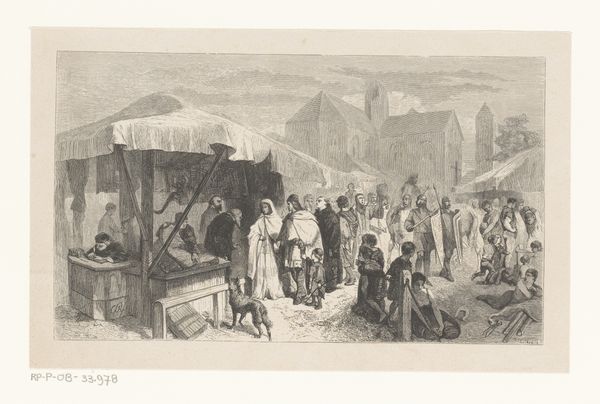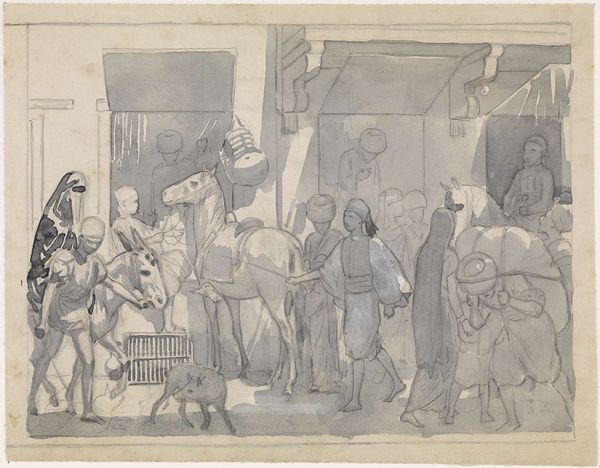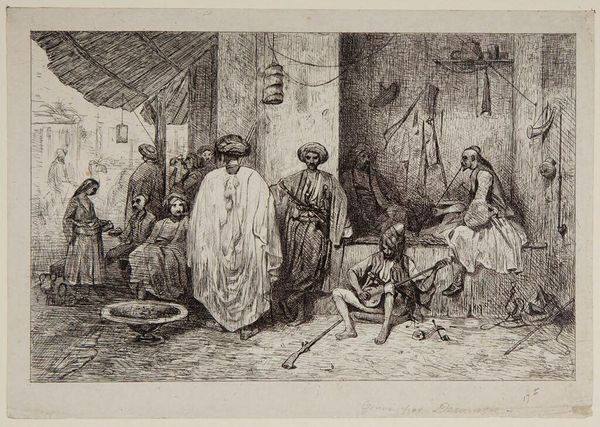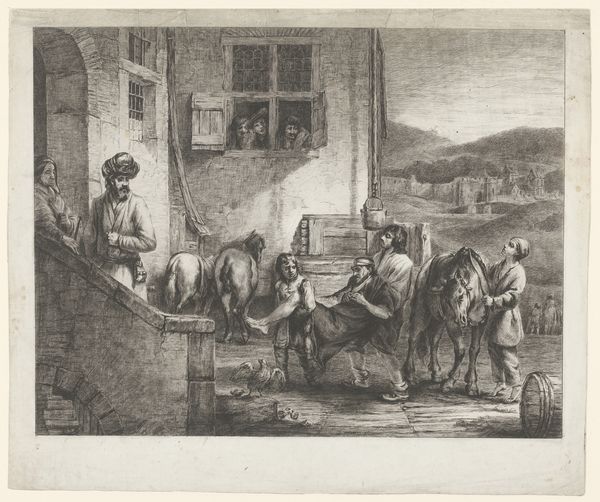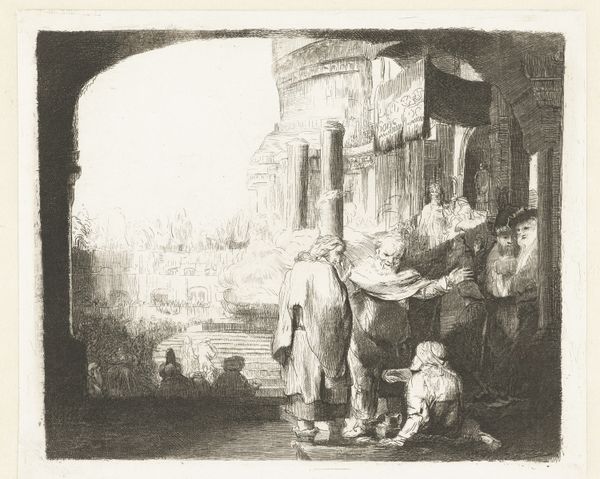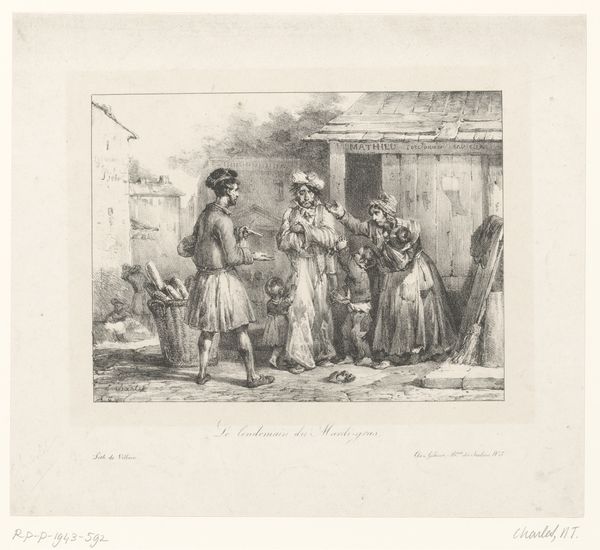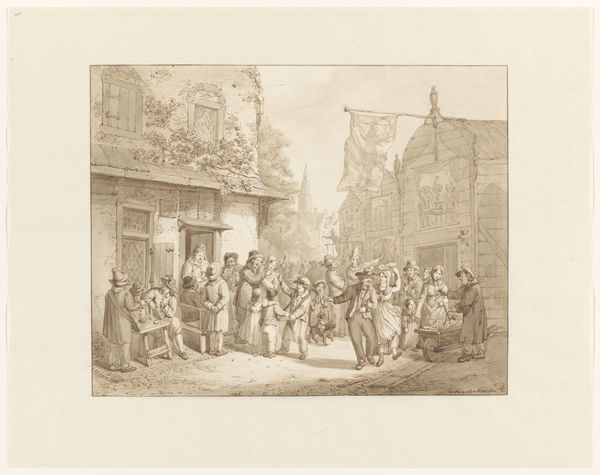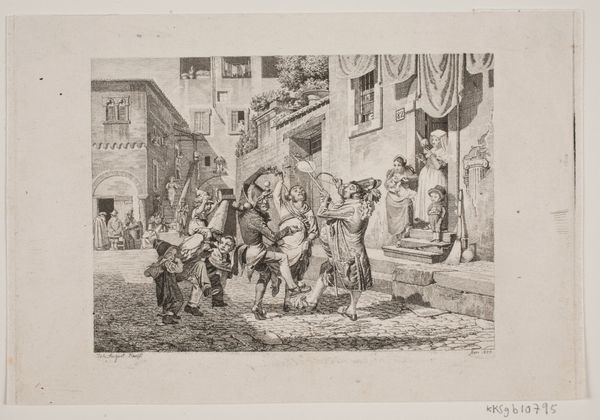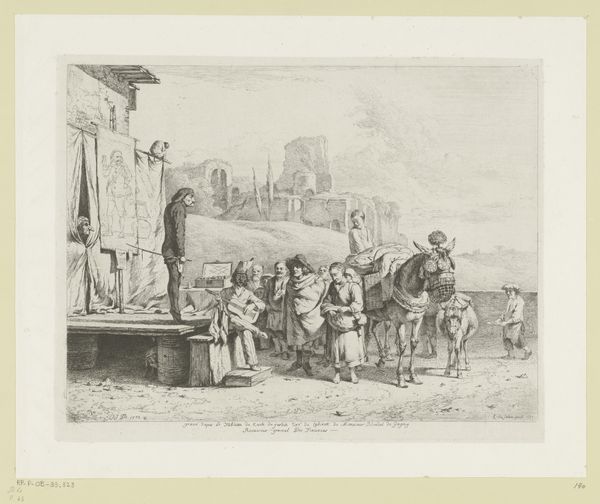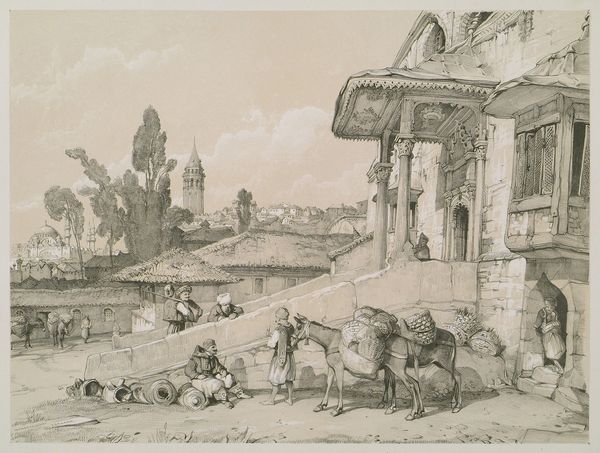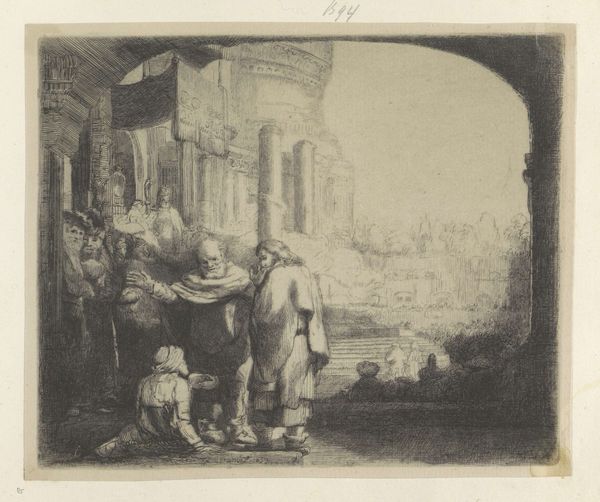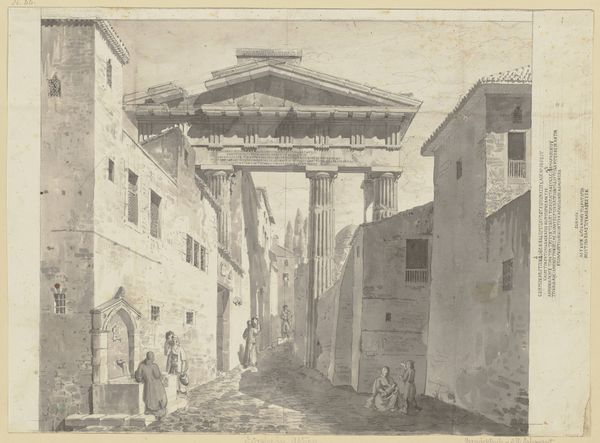
drawing, print, ink, engraving
#
drawing
#
medieval
# print
#
landscape
#
ink
#
orientalism
#
cityscape
#
islamic-art
#
genre-painting
#
academic-art
#
engraving
#
realism
Dimensions: height 239 mm, width 316 mm
Copyright: Rijks Museum: Open Domain
Curator: This is Willem de Famars Testas’s “Straat in Kaïro,” or “Street in Cairo,” created in 1862 using ink and engraving techniques. What's your initial take on this cityscape? Editor: The texture, achieved through the engraving, creates a mesmerizing density. It really captures the feeling of a bustling, crowded street scene; though almost monochromatic, it feels surprisingly vivid. Curator: The artist's Orientalist style here places it within a broader conversation. What strikes me is the imagined 'authenticity' sought after by European artists, even while this artwork is crafted for Western consumption. The labor and lived reality of Egyptians are mediated through that Western gaze. Editor: Absolutely. Looking closely at the printmaking process—the very act of translation into an engraved image—reminds us that this isn't a straightforward depiction of reality, but a constructed one. There's an evident filtering of reality, a crafting meant to titillate the taste of European sensibilities for the exotic "Orient." How does the artistic labor required to produce the scene affect its reception? Curator: The figures feel posed almost, each telling a story curated to appeal to certain social perceptions. The women, the merchants, even the animals—their presentation fits into predetermined tropes. Consider the limited agency given to the human forms as merely features within the composition itself. Editor: The city depicted here isn't merely a background, it becomes a material backdrop for social exchange and exotic encounters. There's such deliberate intricacy in its making: I find myself focusing on the architectural elements and their production, wondering about their physical realities. What meaning do you glean from that intersection? Curator: This prompts us to challenge the romantic portrayals perpetuated by academic art; especially regarding this street’s role in cultural narratives and socio-political dynamics during that historical period. Editor: Indeed. When we think about production and how things get produced and get meaning applied, we ought to recognize the work that the printing requires to disseminate it to its new audience, a largely Western population that likely saw themselves as the beneficiaries of colonization. That's really valuable context to bring to the reading of an image like this one, which has obvious material considerations, from pigment to social structures. Curator: Examining artwork like “Straat in Kaïro” allows us to address overlooked viewpoints from previously obscured backgrounds. Editor: I'm left pondering not just what is depicted, but also who had access to this image and the implications for their understanding of the world.
Comments
No comments
Be the first to comment and join the conversation on the ultimate creative platform.
